Moorish Architecture In Spain: The Top 20 Examples
The five centuries worth of Moorish Rule in the Iberian Peninsula left behind some of the greatest works of architecture found in Spain. The Moorish buildings of Spain are some of the only works of Islamic Architecture found in Europe, and they rival some of the great buildings found throughout the Middle East. Although Moorish rule in Spain wouldn’t last, the monuments built by the Moors are still some of Spain’s most iconic sites.
What is Moorish Architecture?
Moorish architecture is sort of a catch-all term for architecture that was built by the Moors. “Moors”, is yet another catch-all term, which refers to a vast array of groups such as the Umayyad Caliphate, the Caliphate of Córdoba, the Almoravids, and the Almohad.
All of these groups were Islamic Empires that ruled over modern-day Spain, Portugal, and North Africa as far back as the 7th Century. Although Spain was on the furthest edge of the Islamic World, the Moorish architecture in Spain is regarded by many as the best-preserved Islamic Architecture in Europe.
Timeline of Moorish Architecture in Spain
Spain has a long and complicated history spanning thousands of years. During ancient times, the Romans called this area Hispania, and it was an important part of the Roman Empire. After the fall of the Romans, the Visigoths, a Germanic tribe that had been at war with the Romans for some time, came to control most of the Iberian Peninsula as well as parts of modern-day France.
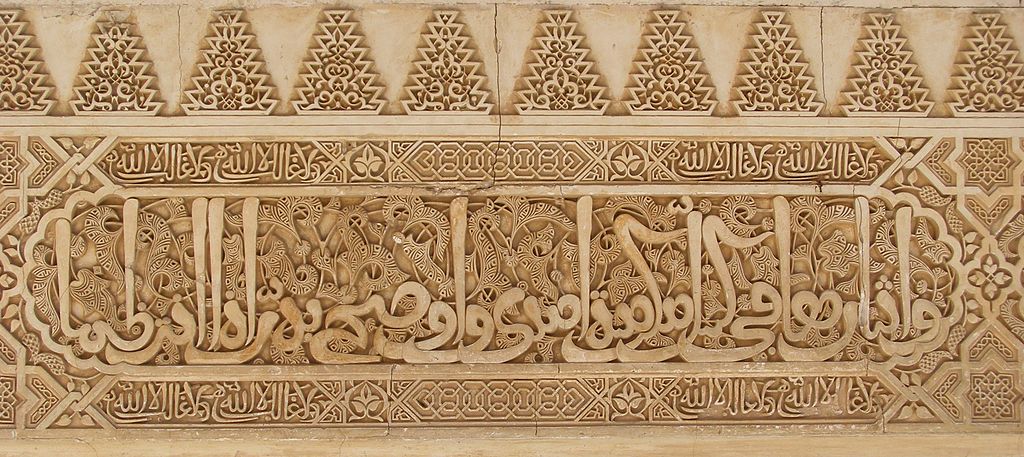
However, the Visigoth Kingdom was weakened by internal disputes, and a new threat from the east was quickly approaching. Starting in the Arabian Peninsula in the Middle East, a rapidly expanding Islamic nation called the Umayyad Caliphate was pushing westward. After conquering North Africa the Umayyads crossed the Strait of Gibraltar in 711 CE and quickly destroyed the Visigoth Kingdom and took control of Iberia.
Various other Islamic states from North Africa followed in the footsteps of the previous conquerors, and Moorish rule survived in various parts of Spain until 1492. The Moors named their newly conquered region Al-Andalus. They built massive palaces, fortifications, mosques, and other buildings all over Iberia, and today, some of the greatest Moorish Architecture on earth is located in Spain.

Image from the Public Domain
- 711 CE – The Umayyad Caliphate crosses the Strait of Gibraltar and quickly takes control of the region, naming it Al-Andalus
- 11th Century – The Umayyad Caliphate ruled Al-Andalus until the early 11th century, as the Umayyad Caliphate, Emirate of Córdoba, and Caliphate of Córdoba
- 11-12th Century – The Almoravid Dynasty takes control of Al-Andalus and rules from their capital in North Africa
- 12-13th Century – The Almoravid Dynasty was taken over by the Almohad, who again controlled Al-Andalus from North Africa.
- 13-15th Century – Eventually, the movement known as the Reconquista pushed Moorish control back to the southern fringes of the Iberian Peninsula. The Final Islamic stronghold was the Emirate of Granada, which was defeated in 1492.
The Reconquista
The Moors were never able to completely subdue the entire peninsula. Small pockets of Christian Kingdoms remained in the rugged north. Slowly the northern kingdoms would gain a larger foothold in the region. Although these kingdoms were often fighting amongst one another, they were united under their common goal, to expel the invaders to the south and reunite all of Iberia under Christian rule. This movement to push back the Moors was known as the Reconquista.
Although there were many more, five of the most important Christian Kingdoms during the Reconquista were Castile, León, Aragón, Navarre, and Catalonia. The borders between these kingdoms and the frontier with the Moors were constantly shifting, with different factions gaining the upper hand throughout history. Even the Pope would get involved in the 13th century, calling for a crusade against the Moors of Iberia.

Photo by Christopher_brown from Wikimedia Commons
The Christian Kingdoms, particularly the Kingdom of Castile, became more and more powerful. Eventually, many important Islamic strongholds were conquered, including Toledo in 1085, Valencia in 1238, and Seville in 1247. During this time, it was very common for the victorious Christians to destroy the old monuments of the former regimes. Many mosques, palaces, and other government buildings were completely dismantled and replaced. However, there are still plenty of works of Moorish Architecture that survived the Reconquista and remain some of the most incredible landmarks in all of Spain.
Features of Moorish Architecture
Horseshoe Arches
Photo by piet theisohn from Wikimedia Commons

Horseshoe arches are a unique structural component of Moorish Architecture and have a lighter and more open feel than rounded Roman arches. These arches at the Medina Azahara are typical Moorish design elements.
Complicated Geometry
Photo by Shesmax from Wikimedia Commons

While much of Europe was still living through the Dark Ages, the culture of the Moors in Spain was thriving. They became excellent engineers and mathematicians. The advanced skills of Moorish craftsmen can be seen here in the ceiling of the Hall of the Ambassadors in the Alhambra in Granada, where thousands of precisely cut wooden pieces are formed together to create a geometric pattern.
Intricate Decorations
Photo by EmDee from Wikimedia Commons

Intricate details are common in Moorish architecture and in all other styles of Islamic architecture. However, it is forbidden in Muslim law to depict images of plants, animals, or people. The exterior walls of the Mezquita in Córdoba are ornately decorated with complex patterns and shapes, which also show an in-depth understanding of mathematics and geometry.
Spiritual Meaning
Photo by Rafesmar from Wikimedia Commons

Many of the greatest works of Moorish Architecture in Spain contain deep spiritual meaning. This concept is found throughout most religious architecture. Here in the interior hall of the Mezquita of Córdoba, the repetitive columns appear to extend infinitely, mimicking the expansive world around us.
What is the Best Moorish Architecture in Spain?
Below is a list of what are often regarded as the best examples of Moorish Architecture in Spain. These buildings show all of the key features of the Moorish style.
1. Alhambra – Granada, Andalusia
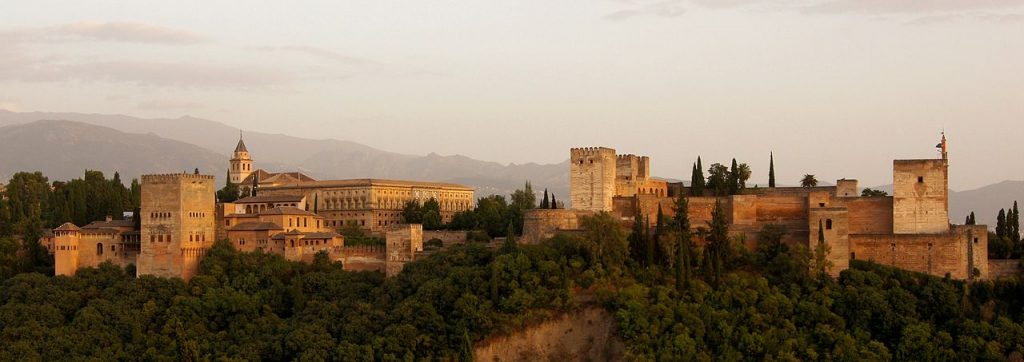
The Alhambra was the last major stronghold held by Islamic forces. Here, the last member of the Nasrid dynasty surrendered to an army led by the Castilian rulers Isabella I and Ferdinand II in 1492. The Christian armies surrounded the city and forced the Sultan of Granada Muhammad XII to leave and go into exile. Granada prospered within the newly unified Kingdom of Spain, and several grand additions were added to the castle.

The Alhambra was a formidable fortress and was a part of many battles over the control of Granada. The Alhambra was not just a strong fortress however, it was also a lavish palace that rivaled some of Europe’s grandest royal residences. The ceiling in the Hall of the Abencerrajes is a great example of the technical precision and vast understanding of geometry that can be found in Islamic architecture. Today The Alhambra is a UNESCO World Heritage Site and is one of the finest examples of Moorish Architecture in Spain.
2. Mezquita – Córdoba, Andalusia

The famous red and white arches within the Mezquita are some of the most recognizable features in any building in Europe. The massive open area within the historic mosque contains 856 columns. It was constructed in 785 CE during the peak of the Umayyad Caliphate’s control of Al-Andalus. The city of Córdoba was retaken by the Kingdom of Castile in 1236, but thankfully the Mezquita survived the sack of the city, and the Christians decided to preserve the building.

Although it was common for mosques and other buildings to be dismantled after their re-conquest, the mosque was saved; but King Charles V ordered the construction of a cathedral directly in the center of the building. This addition, built in a distinct Renaissance Style, essentially forms a separate church within the center of the mosque.
3. Castle of Gormaz – Gormaz, Castile and León

Once the largest castle in all of Europe, the Castle of Gormaz was constructed in the mid-8th century, with a major expansion taking place in 965 CE. Perched high on a steep hill overlooking the Duero River, The Castle of Gormaz was a formidable fortress that helped to secure the border between the Caliphate of Córdoba and the Christian kingdoms to the north.
4. Giralda – Seville, Andalusia
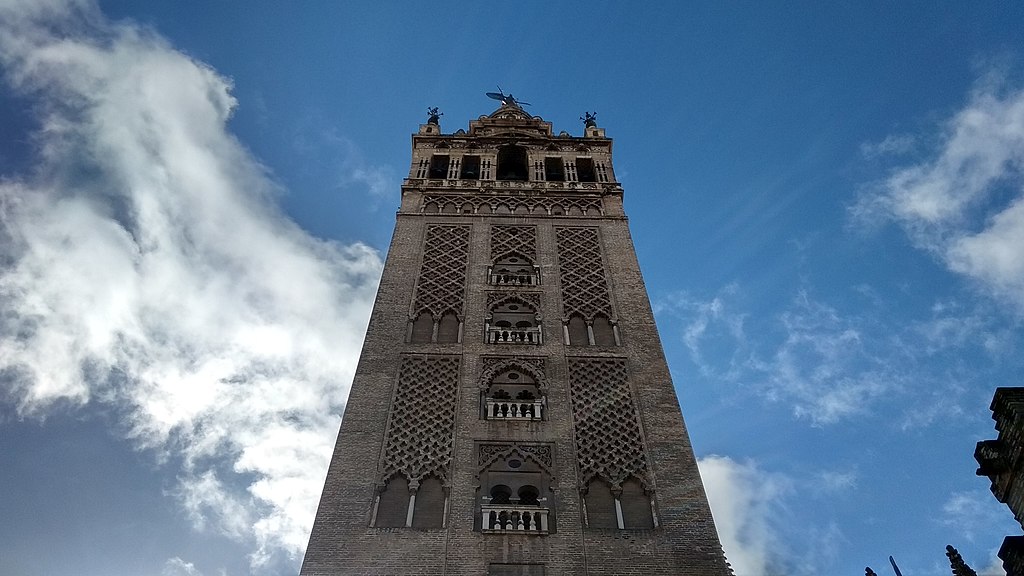
Seville Cathedral, the largest Gothic Cathedral on earth, sits directly on top of an earlier mosque, the vast majority of which was demolished except for the minaret and portions of the adjacent courtyard. Now called La Giralda by the Spanish, the Moorish minaret was once used as a high point where the Islamic call to prayer was shouted down to the city below several times a day. Today Seville Cathedral houses its bells at the top of the tower, and several Renaissance additions were added in the 16th century. But despite its modifications over time, The Giralda is one of the most recognizable elements of Moorish Architecture anywhere in Spain.
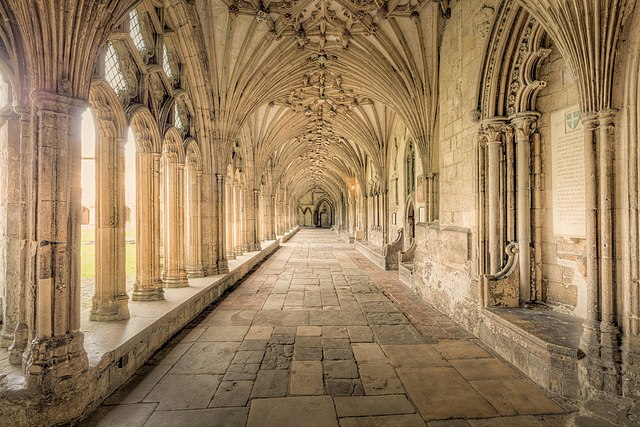
Gothic was the dominant architectural style in Europe during the early Middle Ages. Check out our article on the Top 25 Examples of Gothic Architecture to learn more!
5. Aljafería – Zaragoza, Aragón

The Aljafería Palace in Zaragoza is one of the most northerly works of Moorish Architecture on this list. Similar to the Alhambra in Granada, the Aljafería functioned as a palace as well as a formidable fortress. Construction began in the 11th century, during a time known as the Taifa Period. Eventually, control of the Islamic State of Al-Andalus was split between various city-states or ‘Taifa States’. The Taifa of Zaragoza fell to the Kingdom of Aragón after a lengthy siege. Over the centuries, the Aljafería was heavily modified, including extensive renovation after the Napoleonic wars. But today, many of the original Moorish elements still survive.
6. Torre del Oro – Seville, Andalusia
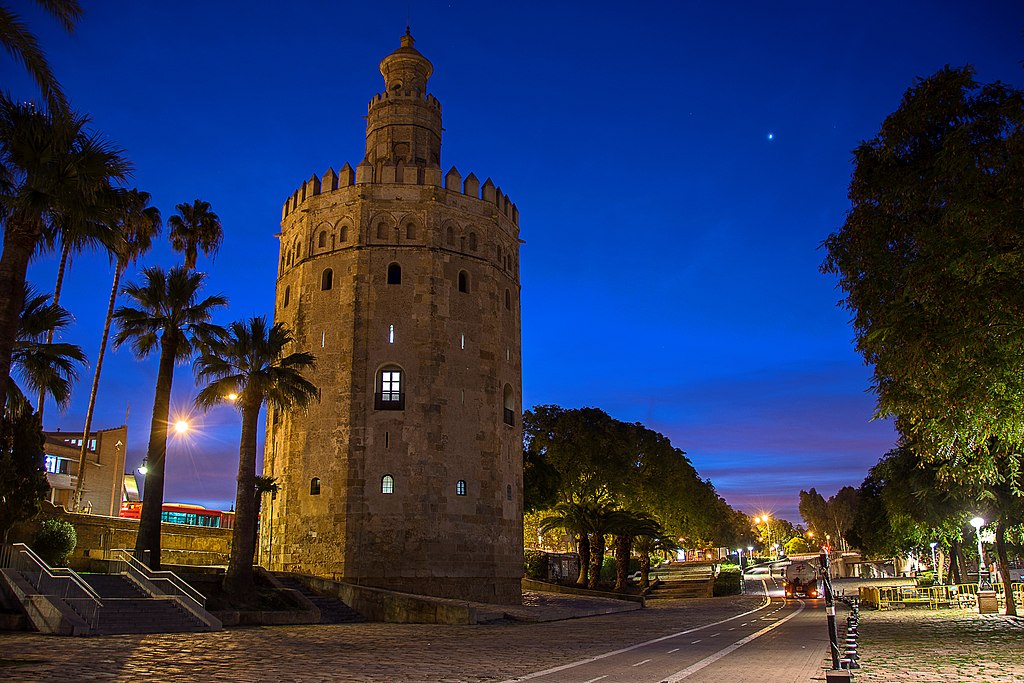
Just a short walk from the Cathedral of Seville, the Torre del Oro stands tall, overlooking the Guadalquivir river below. The name Torre del Oro translates to ‘Tower of Gold’ in English. The tower has 12 sides and is made of a light-colored mixture of stone and mortar. Many of the historic fortifications of Seville were demolished later on, but the Torre del Oro and a few portions of the defensive walls survive to this day.
7. Medina Azahara – Córdoba, Andalusia

Córdoba was once the largest and most powerful city in all of Spain, exceeding the grandeur and size of many of Europe’s capitals, such as Paris and London. During the city’s golden age from the 8th to 11th century, the Caliphate of Córdoba constructed a massive royal palace known as the Medina Azahara. Unlike several of the other works of Moorish Architecture on this list, the Medina Azahara is essentially a ruin, after being damaged and abandoned in the 11th century. Today, you can only see glimpses of the palace’s former glory, but several ornately decorated arches and walls remain.
Like Architecture of Cities? Sign up for our mailing list to get updates on our latest articles and other information related to Architectural History.
8. Real Alcázar de Sevilla – Seville, Andalusia


The Real Alcázar de Sevilla was originally a fortress located in the southern portion of Seville’s fortification system. Located close to the Giralda and the Torre del Oro, the Alcázar is one of the city’s many Moorish Buildings. After Seville was captured by King Ferdinand III of Castile in 1248 CE, the King invested a great deal into the city’s architecture. The Alcázar was completely renovated and expanded in a new form of architecture known as the Mudejar Style. But despite all of the renovations, a few traces of the original Moorish construction still remain.
9. Calahorra Tower – Córdoba, Andalusia
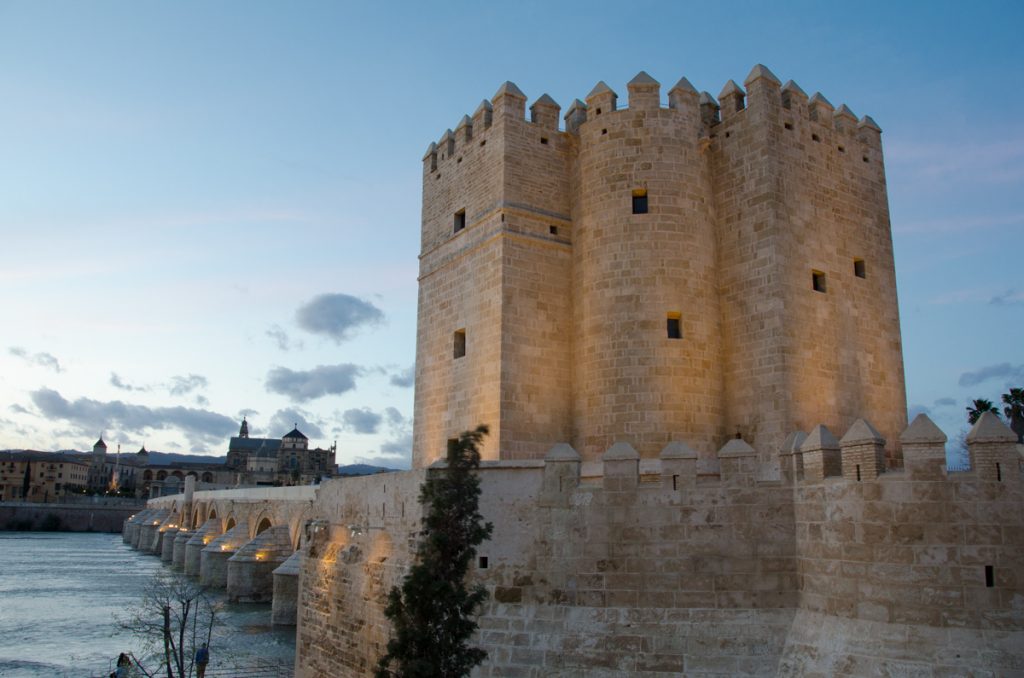
Córdoba, located in the heart of Andalusia, has been a major city since Roman times. The Romans constructed a large bridge over the Guadalquivir River which still stands to this day. After the Islamic Conquests, the bridge was fortified with a stone gatehouse. The Calahorra Tower still stands, blending seamlessly with its Roman foundations and serves as a testament to Islamic rule in Spain.
10. Castle of Zafra – Campillo de Dueñas, Castilla–La Mancha

Although the Castle of Zafra might not be as massive and impressive as other castles on this list, it makes up for that with its distinctive positioning atop a steep rocky outcrop. Dating from the 12th century and built entirely from sandstone, the Castle of Zafra was an important element in the defensive line of the Moor’s northern border. Eventually, the castle switched hands, becoming an outpost for the Kingdom of Aragón.
11. Castillo de Gibralfaro – Málaga, Andalusia

Málaga, the largest city on Spain’s southern coast, was once a key port city in the Islamic states that ruled the Iberian Peninsula. Overlooking the city, the Castillo de Girbolfaro is a castle that dates back to Phoenician times. The fortress was greatly expanded by the Moors and the main portion was also connected to the Alcazaba of Málaga by a series of stone walls. Today the Alcazaba and the Castillo de Giralfaro are the most well-known works of Moorish Architecture in Spain’s Costa del Sol.
12. Alcazaba – Almería, Andalusia

During the Middle Ages, it was very common for nearly every city to have a large fortification system. These buildings go by many names: castle, citadel, fortress, or kremlin, and in Arabic, these buildings were often called Alcazaba or Alcázar. Almería, a port city located on Spain’s Mediterranean coastline, is a popular vacation spot for beachgoers. But overlooking the modern metropolitan city below is the Alcazaba de Almería. The fortifications were mainly built in the 10th and 11th centuries, and today stand as one of the few Moorish Buildings in the region of Almería. These Moorish Castles can be found in many other major cities on the Iberian Peninsula, such as Granada, Zaragoza, Sintra, and Lisbon.
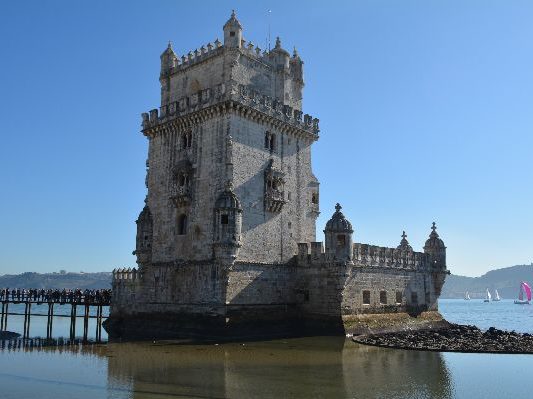
Interested in Lisbon? Check out our article on the Architecture of Lisbon to learn more about the city’s historic buildings!
13. El Bañuelo – Granada, Andalusia

The Moors left behind a wide variety of castles, palaces, and mosques throughout Spain, but they also built many large and important bathhouses. El Bañuelo in Granada is an Islamic hammam or bathhouse that dates from the 11th century. The stark interior of the baths highlights the complex forms and geometries in the building.
14. Alcázar of Jerez – Jerez de la Frontera, Andalusia

Certain city names in Spain contain the phrase, ‘de la Frontera’ meaning ‘on the frontier.’ The frontier was of course the constantly shifting line between the Islamic groups in the south and the Christian Kingdoms in the north. The Moors built a massive fort within the city of Jerez, which was the focus of many different power struggles during the Reconquista. The towers and walls are remarkably well preserved and are highlights of the golden age of Moorish Architecture in Spain.
15. Castillo de Molina de Aragón – Molina de Aragón, Castille-La Mancha
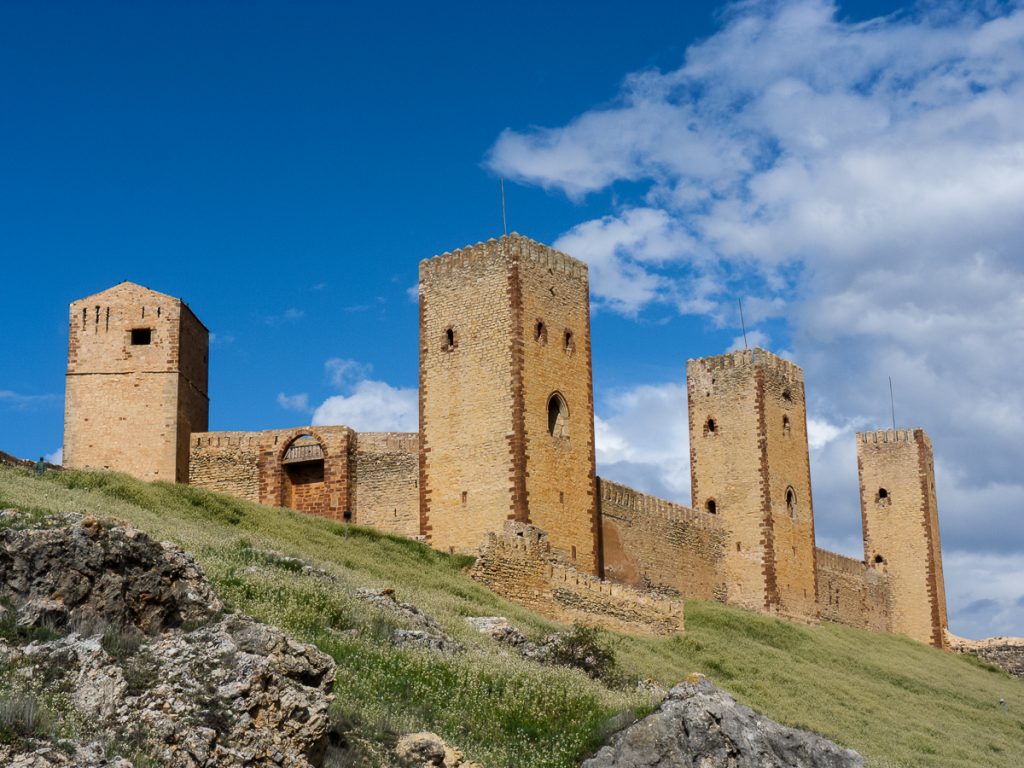
The Castillo de Molina de Aragón is a Moorish fortress located in the region of Guadalajara. It was constructed during the 10th and 11th centuries in a standard form of Moorish Military Architecture. In 1129 CE the castle was captured by the Kingdom of Aragón and subsequently used as an Aragónese defensive position.
16. Castillo de Sánta Barbara – Alicante, Valencia
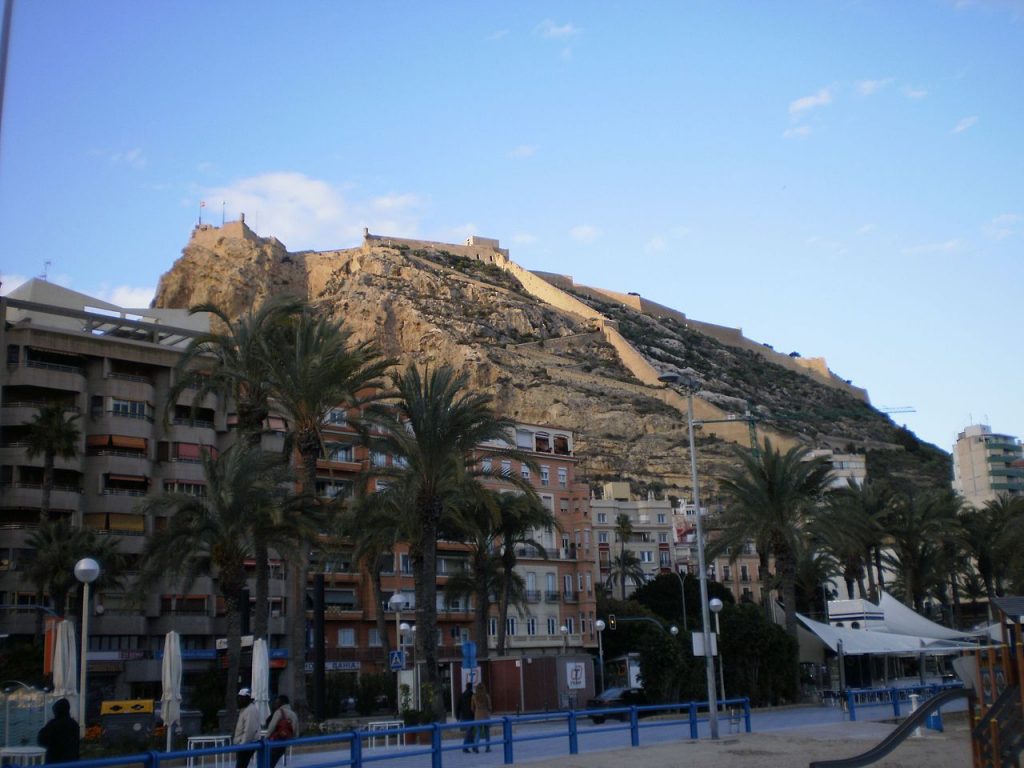
Alicante, a large city within Spain’s Costa Blanca region, features one of the best-preserved works of Moorish architecture anywhere in Spain. The Castillo de Sánta Barbara sits atop a hill that has been occupied since the Bronze Age. But most of the actual castle dates from the period of Islamic rule around the 9th-12th centuries. The fortress was used continuously for military purposes through the 1800s until it was opened to the public in 1963.
17. Castillo de Almodóvar del Río – Almodóvar del Río, Andalusia
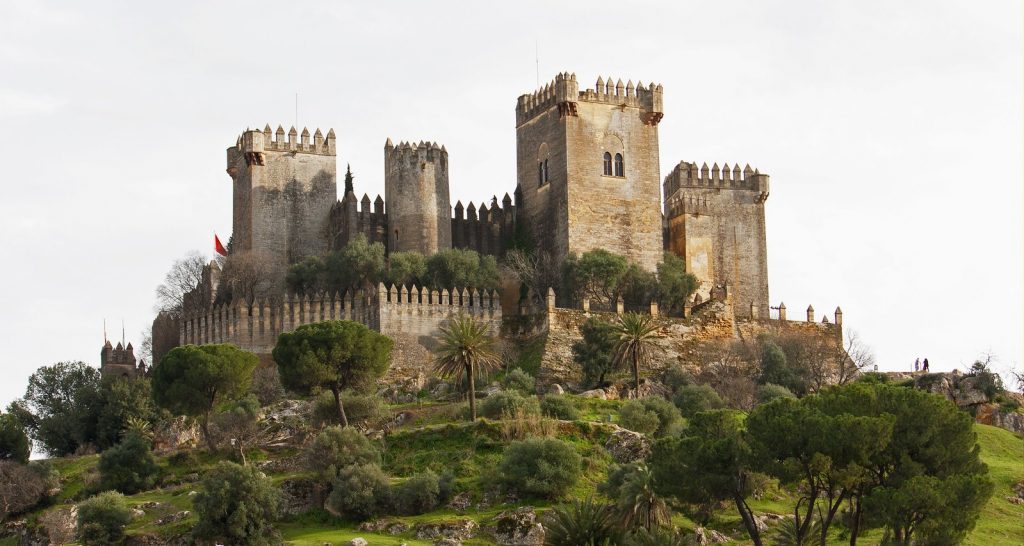
Located just 25 minutes outside of Córdoba, the Castillo de Almodócar del Río is a popular tourist attraction thanks to its photogenic appearance and scenic backdrop. The castle was constructed shortly after the initial Moorish Conquest of the Iberian Peninsula in 760. Today, it stands remarkably well preserved. The castle is often used as a filming location, thanks to its cohesive medieval appearance.
18. Moorish Baths of Jaén – Jaén, Andalusia

Although Jaén isn’t as large as a lot of other nearby cities in Andalusia, it still contains some of the best-preserved Moorish Baths in all of Spain. The baths of Jaén were continuously modified from the 10th to 13th centuries, but after the Reconquista, they were abandoned like many other historic hammams from formerly Islamic lands.
19. Alcazaba of Badajoz – Badajoz, Extremadura

The Alcazaba of Badajoz dates from the 9th century, but most of the architecture that can be seen now is from the Almohad period in the 12th century. Nestled between the city of Badajoz and the Guadiana River, the Alcazaba is strategically placed. Not only did the fortress see many battles in the medieval era, but it was also the location for one of Napoleon’s greatest defeats during the Peninsular War.
20. Castillo de Burgalimar – Baños de la Encina, Andalusia

Castillo de Burgalimar dates from the 10th century and was built by the Umayyad Caliphate. Today it is one of many castles in the Jaén province of Andalusia. Although not as large as many other castles from this time period, the Castillo de Burgalimar is renowned for being one of the best-preserved Moorish castles anywhere in Spain.
Aftermath of Moorish Rule in Spain and the Reconquista
In the 7th century, when the forces of the Umayyad Caliphate crossed the Strait of Gibraltar and marched onto the Iberian Peninsula, the course of history and architecture in Spain changed forever. The Moors would have a strong grip over the lands of Al-Andalus for over seven centuries, creating a complex culture that was renowned for its advances in science, art, and mathematics.
Today, both Spain and Portugal contain some of the finest examples of Moorish Architecture anywhere on earth. During the peak of Al-Andalus, every city in the region was filled with important Islamic buildings that aren’t typically found in Western Europe.
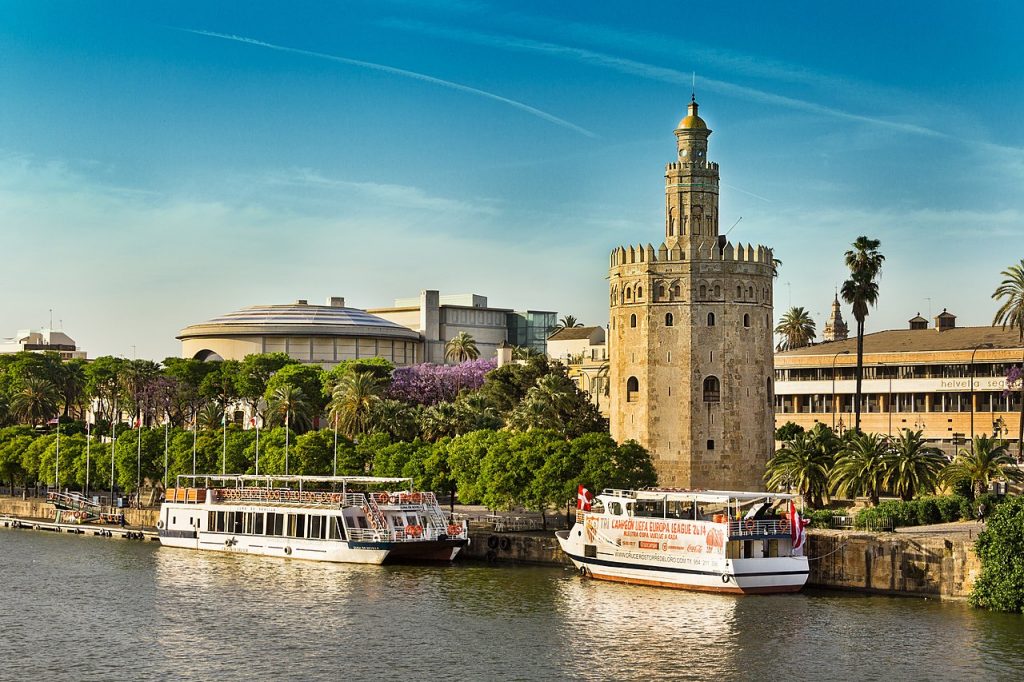
After centuries of conflict during the Reconquista, the Iberian Peninsula changed drastically. Islamic culture and religion lived on for a time after the victories of the Christians. Moorish craftsmen in particular, would see their skills utilized more than ever. The Spanish would eventually control a vast empire, spanning multiple oceans and continents, and they brought immense amounts of wealth and power back to the former lands of Al-Andalus.
As Christianity and European Culture took hold in southern Spain, many of the treasured buildings of Al-Andalus were destroyed. Mosques, hammams, and monuments built in the Islamic style were dismantled or converted into different buildings by the Christian kingdoms.

Photo by Tuxyso / Wikimedia Commons / CC-BY-SA-3.0
Even though Spain changed forever after the Reconquista, nearly every architectural treasure that was lost was eventually reborn. Churches were built on the foundations of Mosques, and new palaces, plazas, and parks were built all over the country to create the Spain that we all know today.
Moorish Architecture outside of Spain
Although this article focuses on the Moorish Architecture of Spain specifically, the Moors built many more buildings all across North Africa. In a region called the Maghreb, all of the Islamic States that controlled Al-Andalus also built important works of architecture in what is now modern-day Morocco, Algeria, Tunisia, Libya, and beyond.

Photo by Samuel Romero from Wikimedia Commons
Morocco is home to some of the most impressive Moorish buildings since it was the capital region of three huge empires, the Almoravids, the Almohad, and the Marinids. The Kutubiyya Mosque, located in Marrakesh, Morocco, is one of the largest mosques ever built during the rule of the Moors.
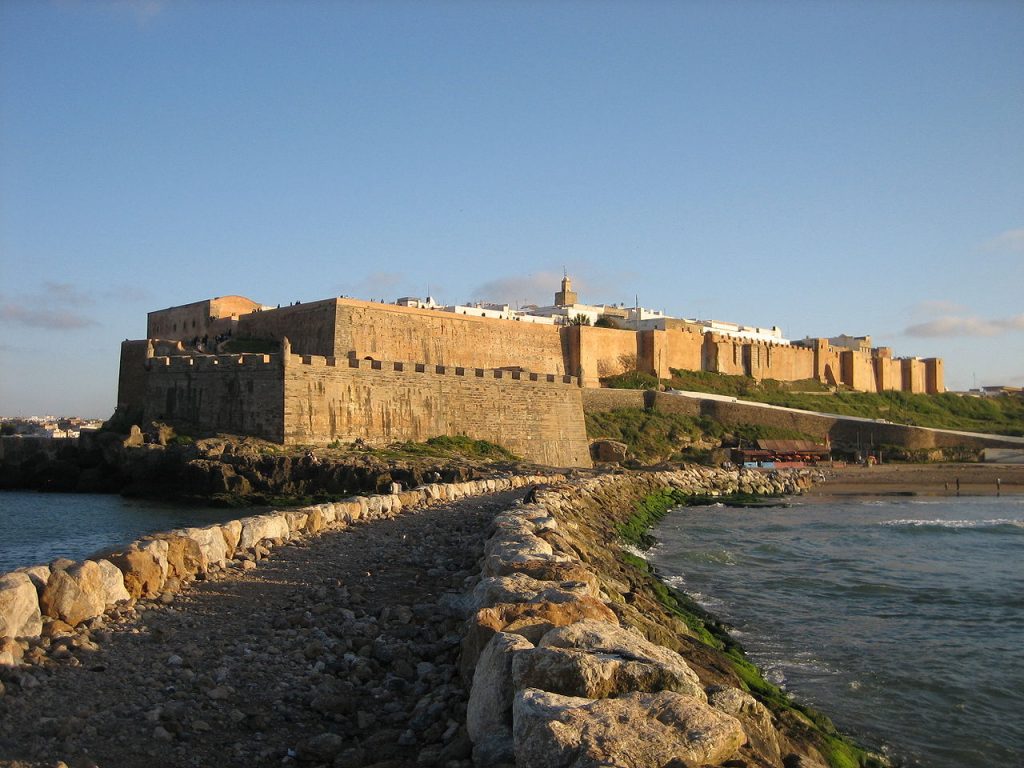
Just like in modern-day Spain, the Islamic rulers of North Africa needed to build massive fortifications in order to secure control of the land. The Kasbah of the Udayas is one of the best-known Moorish castles in all of modern-day Morocco. The fortifications in Marrakesh, a leading Moorish city, also contain the Bab Agnaaou, an ornately decorated gate within the city walls that was designed to showcase the wealth and power of the Almohad Empire.

Photo by Luc Viatour / https://Lucnix.be
Moorish Architecture’s Legacy: Mudejar Architecture
As the Reconquista pushed south and slowly forced out the Islamic Moors, the Moorish culture still lingered on. Islamic religion and the Arabic language remained in the Iberian Peninsula for centuries, and despite many obstacles, they still can be seen in modern Spain and Portugal today. In addition to the lingering elements of Islamic culture that stayed in Spain, many architectural traditions live on, too.
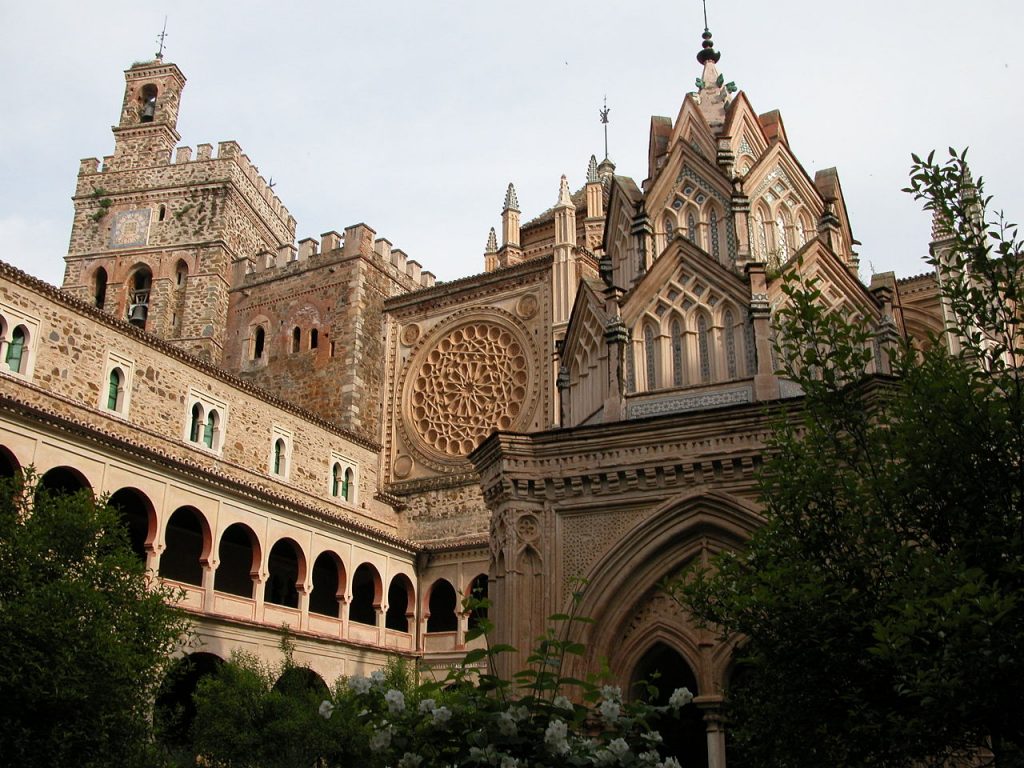
A new building style was eventually born from the conflicts between the Moors and the Spanish: the Mudejar style. Combining elements of traditional Islamic Architecture wih features and building practices from the rest of Europe, the Mudejar style is one of the most Iconic building types in all of Iberia.


- (left) The Torre de San Martín in Teruel, Aragan
- (right) The tower of Iglesia de Nuestra Señora de la Asunción in Utebo, Aragón
- Left Photo by rheins from Wikimedia Commons
- Right Photo by Zarateman from Wikimedia Commons
All throughout Spain, buildings such as the church of Utebo and the Royal Monastery of Santa Maria de Guadalupe were built in the Mudejar style. The geometric patterns and ornate brickwork echo back to the skills of the original Moorish craftsman who built buildings like the Alhambra and the Giralda.
Even though it led to a lot of war and bloodshed, the Moorish conquest of Spain and the eventual reconquest of the region by the Spanish left behind a truly unique region of Europe. There really isn’t anywhere else on earth that has seen such a unique blending of cultures, quite like Spain. The Moorish Architecture that we see today in Spain should be on every modern-day traveler’s itinerary!

- About the Author
- Rob Carney, the founder and lead writer for Architecture of Cities has been studying the history of architecture for over 15 years.
- He is an avid traveler and photographer, and he is passionate about buildings and building history.
- Rob has a B.S. and a Master’s degree in Architecture and has worked as an architect and engineer in the Boston area for 10 years.
Like Architecture of Cities? Sign up for our mailing list to get updates on our latest articles and other information related to Architectural History.
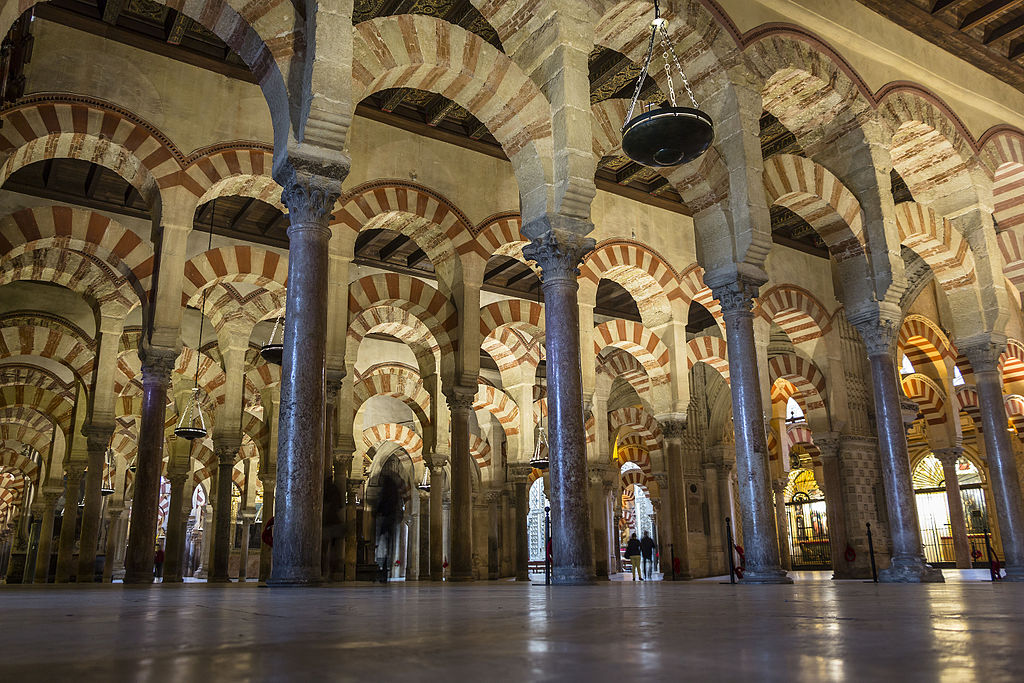
Photo by Rafesmar from Wikimedia Commons


